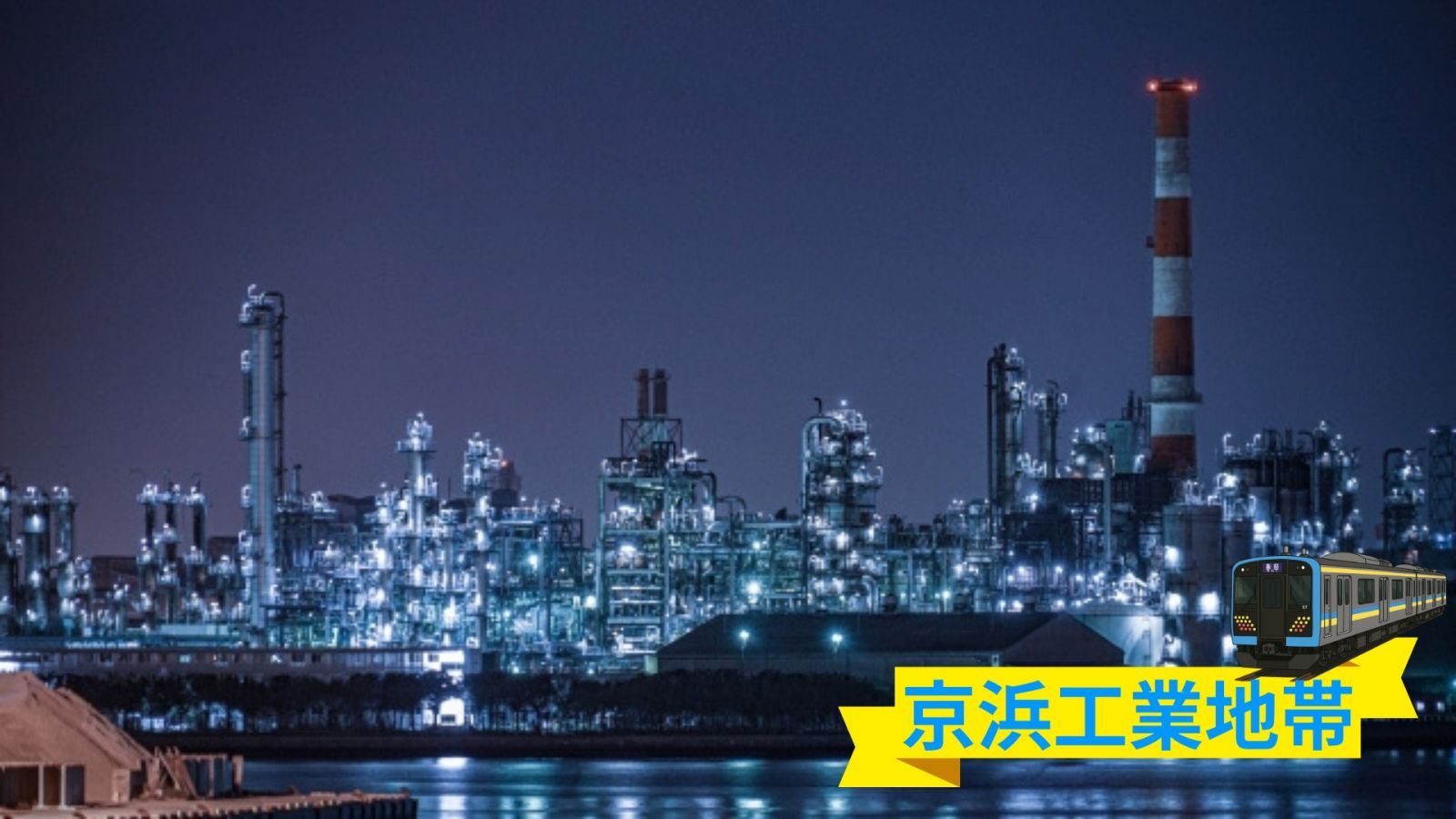Located in the Keihin Industrial Zone between Tokyo and Yokohama, the JR Tsurumi Line runs through the heart of this area that supports Japanese industry. While being part of the metropolitan railway network, it possesses a unique atmosphere that sets it apart from other lines. With its retro station buildings, views of factory districts from the train windows, and occasional moments of tranquility, it’s beloved by railway enthusiasts as an “urban hidden gem line.” However, first-time users of the Tsurumi Line might be surprised by its special circumstances. This investigation explores two intriguing aspects of the Tsurumi Line, from its birth history to future prospects!
1. The Birth of the Tsurumi Line: An “Industrial Railway” Born with the Keihin Industrial Zone
The key to understanding the Tsurumi Line’s mysteries lies in its origins. The Tsurumi Line wasn’t originally built primarily to transport general passengers. Its predecessor was the private railway “Tsurumi Rinkō Railway” established from the late Taisho era to early Showa era. During Japan’s modernization, entrepreneurs including the so-called “Cement King” led large-scale land reclamation projects in the Kawasaki-Tsurumi coastal areas. This gave birth to the Keihin Industrial Zone.

To develop this new industrial zone, transportation for raw materials and products (“freight transport”) and for workers (“employee transport”) was essential. The Tsurumi Rinkō Railway was laid for this purpose. In other words, from its birth, the Tsurumi Line had the character of a “dedicated line for factories.” Stations in the reclaimed land, which didn’t even have place names yet, were named after the entrepreneurs involved in its establishment.
| Station Name | Origin |
|---|---|
| Asano Station | Founder |
| Anzen Station | Investor |
| Ohkawa Station | Paper industry leader |
| Musashi-Shiraishi Station | Nippon Kokan founder |
| Ōgimachi Station | Asano family crest “fan” |

Later, during World War II in 1943, it was nationalized as a militarily important line, passing through JNR to become the current JR Tsurumi Line. This history of being “built for factories” defines the current appearance of the Tsurumi Line.
2. Mystery ①: Why are most Tsurumi Line stations unstaffed?

Almost all stations on the Tsurumi Line, except Tsurumi Station, are currently unstaffed. This form, extremely rare in the metropolitan area, has three main reasons.
Reason 1: Extreme “commuter-focused” line
Since the Tsurumi Line runs through the heart of the Keihin Industrial Zone, the vast majority of users are people commuting to factories and businesses along the line. Therefore, usage patterns are extremely biased. While it gets very crowded during weekday morning and evening rush hours, passenger numbers drop dramatically during daytime, nighttime, and holidays when factories are closed. Since usage is limited to specific time periods, staffing all stations all day is inefficient. From an operational cost perspective, unstaffing is considered rational.
Reason 2: Historical “checkpoint” system (intermediate gate at Tsurumi Station)
With many unstaffed stations, the question arises: “How do you pay fares?” The Tsurumi Line long adopted a unique system to solve this. Most people using the Tsurumi Line transfer from other lines like the Keihin-Tōhoku Line at Tsurumi Station.





